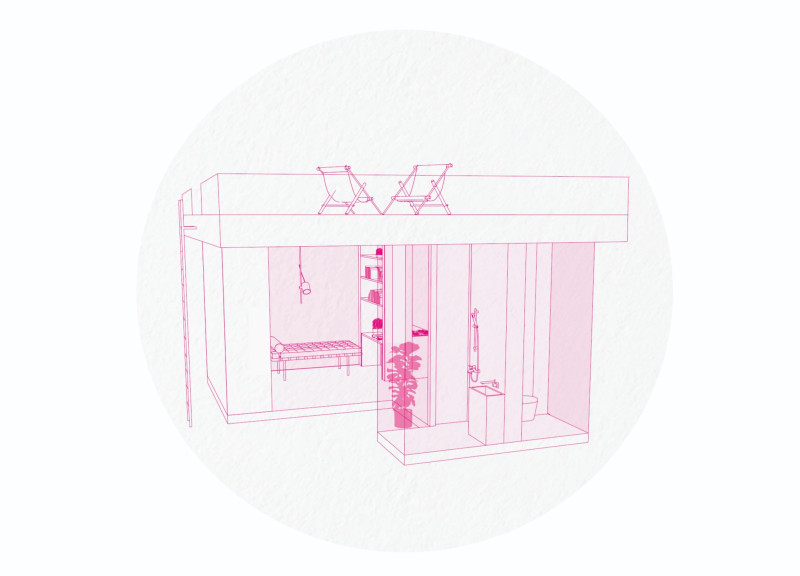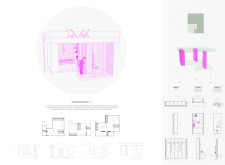5 key facts about this project
The design consists of three distinct modular segments which each fulfill specific residential functions: a closet, a kitchen unit, and a bathroom unit. This modular configuration enables a simplistic approach to construction, allowing for quick assembly and reduced material waste, reinforcing sustainability as a core aspect of the design philosophy.
Efficient Use of Modular Structures
One of the standout features of the Modular Housing Concept is its ability to offer adaptability within a compact layout. The design utilizes three primary modular pillars that allow for functional independence while promoting interconnected living spaces. By employing these modular components, the project minimizes construction time and material requirements, enhancing practicality for modern urban living.
This project also embraces a contemporary aesthetic with an emphasis on transparency and light. The incorporation of large glass panels provides ample natural light while creating a seamless transition between interior and exterior spaces. Furthermore, the inclusion of greenery within the design reflects a commitment to biophilic principles, encouraging a connection to nature that enhances the living experience.
Integration of Sustainable Practices
Sustainability is at the core of the Modular Housing Concept, not only in its material choices but also in its spatial configuration. By fostering natural ventilation and maximizing daylight access, residents can reduce their dependence on artificial heating and cooling systems. The project champions eco-friendly materials, such as sustainable composites for the modular pillars and reclaimed wood for interior finishes, thus ensuring a reduced environmental footprint while promoting a healthy living environment.
Additionally, the layout allows for versatile configurations that can accommodate different family sizes and lifestyle preferences. This flexibility is essential in urban settings where space is at a premium, allowing individuals and families to personalize their living arrangements without the complications typically associated with traditional housing developments.
For a more comprehensive understanding of the Modular Housing Concept, readers are encouraged to explore the details of the architectural plans, sections, designs, and ideas presented in the project documentation. By examining these elements closely, one can appreciate the thoughtful execution and innovative approaches that define this architectural endeavor.























